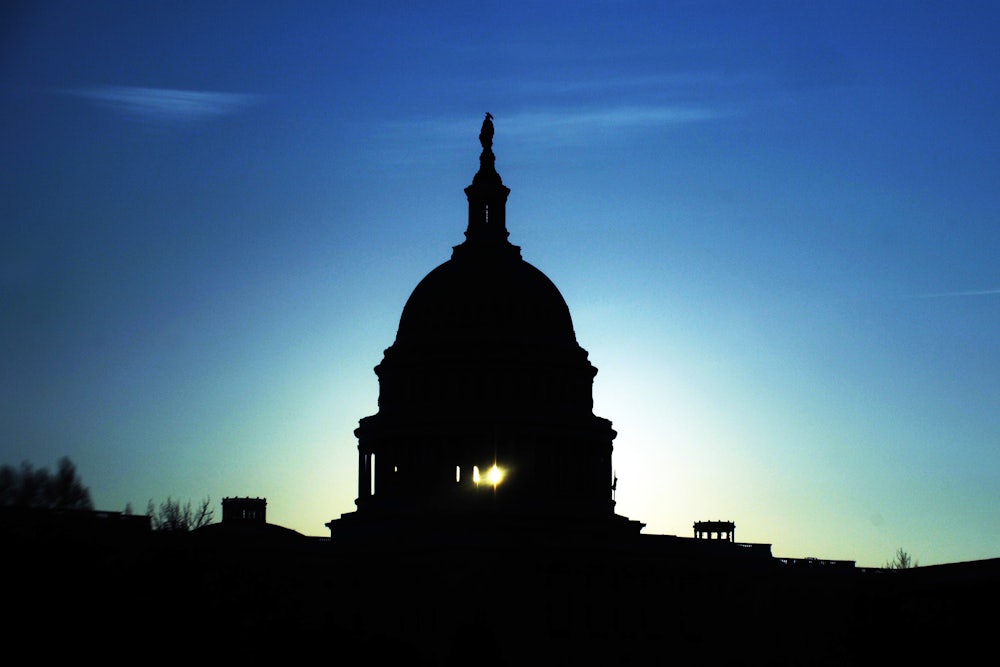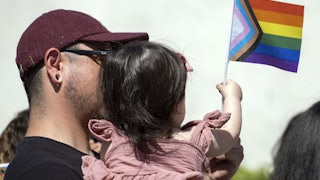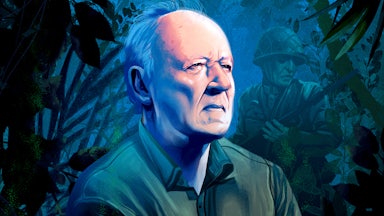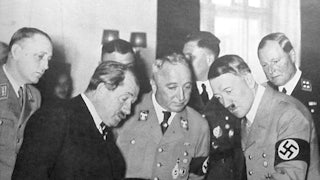In July 1950, Admiral Roscoe Hillenkoetter came to offer testimony to a group of U.S. senators. Hillenkoetter, appointed director of the newly minted Central Intelligence Agency three years earlier, recounted for the assembled senators a cautionary tale from across the Atlantic: In the years before World War I, the Austro-Hungarian counterintelligence service discovered that one of its officers, Colonel Alfred Redl, had been passing privileged information to Russian agents. Redl was a gay man, and the rumor spread that the Russians had blackmailed him, threatening to expose his homosexuality if he did not cooperate.
Redl took his own life in 1913 after his perfidy came to light, but for Hillenkoetter the story hardly ended there. Decades later, he would tell worried lawmakers that Redl was an example of “what can be done to a country’s security by a homosexual strategically placed.” Thereafter, the Redl affair made it into subsequent reports about the danger that gay men—cliquish, conspiratorial, and susceptible to blackmail—posed to national security. Hillenkoetter’s testimony marked one of the early salvos of what came to be known as the “lavender scare,” a wide-reaching purge of gay men and lesbians from federal government employ. Across the Western world, the early Cold War was defined by a fear of gay men, in particular of gay conspiracies and gay espionage—aptly captured in the neologism “the Homintern.”
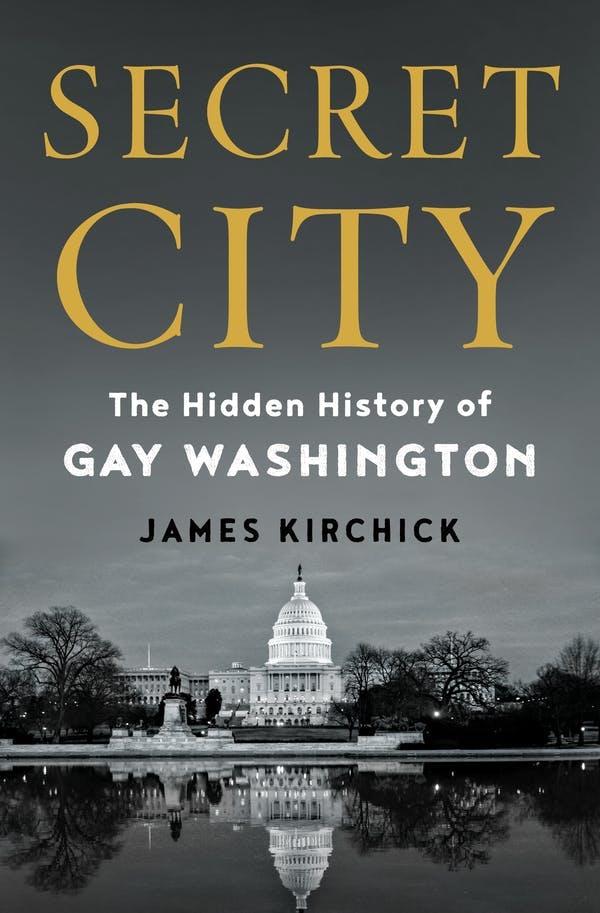
These fears, especially the fear that cabals of queer men were secretly running the government, form the leitmotif of James Kirchick’s Secret City, a new history of homosexuality in the federal government. Kirchick highlights how, from the New Deal all the way through the 1980s, gay men in government employ were perpetually forced to deal with accusations of dual loyalties and the fear that exposure might lead to termination or worse. The idea of a “secret city” is thus essential to Kirchick’s story: the notion that Washington, D.C., contained an “open city,” where the men and women who worked in government lived their public lives, as well as its mirror, a secret city where gay men and lesbians hid their true selves.
It is, broadly, a familiar story of the closet. But by focusing on gay men and lesbians who worked in and around the federal government, partook of Washington high society, and largely remained closeted, Kirchick offers a very different take on American LGBTQ history. Whereas many books emphasize the work of pathbreaking activists who came out of the closet and took aim at society’s homophobic norms, Secret City emphasizes those who worked inside the system—many of them Republicans who were forced to balance their hidden sexuality and their public conservatism. It is thus a history of slow assimilation, a fundamentally conservative account that endeavors to write gay men and lesbians into a triumphant story of American democracy.
In the first postwar decades, the animus against homosexuality that permeated national culture and political discourse alike was largely a bipartisan affair. Take Sumner Welles, for instance, a high-ranking official in Franklin Delano Roosevelt’s State Department and a member of that era’s blue-blooded establishment, who had a penchant for propositioning train porters. When rumors of one such incident began to swirl, thanks to the machinations of Welles’s boss, Secretary of State Cordell Hull, Roosevelt reluctantly accepted Welles’s resignation in 1943. Secret City is littered with such cases: of men who hid their sexual proclivities and were forced out of their positions or committed suicide when they threatened to come to light.
As gay liberation swept the country in the 1970s, though, the fear of homosexuality became an increasingly partisan issue. Richard Nixon was, in Kirchick’s words, “fixated on homosexuality,” and his administration continued to use it as a “smear” against its enemies, real or imagined. Shortly after Nixon’s time in office, conservatives mounted a rearguard action against liberation efforts, from the unsuccessful Briggs Initiative in California, which aimed to ban queer people from public teaching careers, to Anita Bryant’s mendaciously named “Save Our Children” campaign that successfully overturned nondiscrimination ordinances around the country.
Yet, as Kirchick highlights, gay men continued to swell the ranks of the Republican Party. In fact, in the new conservative movement that propelled Ronald Reagan to the White House in 1980, several central figures were gay men, from Terry Dolan, who co-founded the National Conservative Political Action Committee, to Carl Channell, one of the masterminds of the Iran Contra affair. Reagan’s would be, in Kirchick’s words, “the gayest of any presidential administration yet.”
Because these men hid their sexuality from public view, fears of gay conspiracies continued to fester within the Republican Party. Kirchick recounts, in a particularly vivid episode, how in 1980 Congressman Pete McCloskey, a California Republican who despised Reagan, tried to smear the nominee with a rumor that he was controlled by “a clandestine homosexual cabal with ‘almost a religious zeal against communism.’” This was a new version of the fears that had propelled anti-gay sentiment in the early years of the Cold War.
Focusing on these men, especially those “white Republican” men in the Reagan administration for whom “it was an exhilarating time to be gay in Washington,” Secret City points to a real paradox at the heart of the gay conservative experience. The Reagans had numerous gay friends from their time in Hollywood, and Nancy Reagan “emerged as a camp icon.” Terry Dolan could spend nights “prowling the local leather bar scene decked out in the era’s ‘gay clone’ uniform—tight jeans, leather cowboy boots, flannel shirt, and studded leather wristband.” All the while, they had been sent to Washington with the support of evangelical conservatives steeped in antipathy toward queer people. This, after all, was the president who for four long years refused to even say, “AIDS.” It’s a paradox that Kirchick underscores again and again, pointing to the contradictions of those gay conservatives who avowed a politics in public that was incompatible with their private lives.
In this way, Secret City is really a history of the gay American conservative—a history of how gay men kept turning up in national politics and the federal government where they were least expected. For some, Kirchick argues, anti-communism and devotion to individual liberty provided the glue between these two halves of their personalities. For others, it seems, it was simply hypocrisy or convenience.
The book is also a retelling of why life changed for gay men and lesbians (trans people are almost entirely invisible in the book) in the United States across the course of the Cold War. The familiar figures of activist history are often absent from its pages. While Frank Kameny, the iconic leader of the Washington, D.C., Mattachine Society, who in 1961 petitioned the U.S. Supreme Court to be restored to his federal job, makes several appearances, we hear more about Washington cocktail parties than about the city’s branch of the radical Gay Liberation Front. The AIDS Coalition to Unleash Power, or ACT UP, which had such success pressuring the federal government to take the epidemic seriously, is mentioned nowhere.
Instead, Kirchick explains the changes of the last 50 years as the result of the “inexorable increase in acceptance” that resulted from “openness triumphing over concealment.” That is, it was precisely those gay men and lesbians in the federal government who slowly made homosexuality more visible and thus more tolerated who are responsible for these changes. Assimilation rather than revolution is the telos toward which Secret City strives.
Kirchick points, for instance, to Midge Costanza, a closeted lesbian who served as assistant to the president for public liaison under Jimmy Carter. In 1977, she invited representatives of the National Gay Taskforce to the White House to discuss federal discrimination, the first time gay and lesbian activists had been invited to meet at the executive mansion. Similarly, when Reagan finally put together a National AIDS Board in 1987, he appointed Dr. Frank Lilly, a geneticist at the Albert Einstein Medical Center of Philadelphia and an openly gay man, to serve on the panel. Though a fairly tepid gesture of inclusion, it nonetheless outraged activists on the right, such as the columnist Joseph Sobran, who wrote without a hint of irony that Reagan had become “the first President to give legitimacy to homosexual conduct.” Gay and lesbian technocrats are the heroes of Kirchick’s story, the men and women who worked the levers of power and who, bit by bit, made homosexuality more acceptable.
Wending its way through Washington gossip, Secret City thus emphasizes not how persecution of and discrimination against gay and lesbian people have undermined American claims to equality and justice but rather how the country’s eventual embrace of LGBTQ rights is proof of the success of American liberalism. It offers a triumphant tale, “a magnificent accomplishment of the liberal society,” Kirchick writes, that is “quintessentially American.”
And there’s reason to believe that Kirchick sees this history as a closed book, a chapter that now belongs to the past. Only three years ago, in the midst of conservative efforts to hollow out gay marriage and ban trans people from public life, Kirchick wrote in the pages of The Atlantic that “the movement has achieved nearly everything it needs for gay people to prosper as equal citizens. Instead of fighting this pointless war over wedding cakes, it should declare unilateral victory.” What Kirchick—along with other gay conservative writers, such as Andrew Sullivan—seems to suggest is that because it’s now possible for some queer people to assimilate successfully, it’s time for the movement to, well, move on.
But in spite of such sanguinity from the gay right, the internal contradictions that Kirchick astutely points out in earlier eras have not vanished. Even as gay men and lesbians have become ever more visible—and Gallup tracking polls indicate that acceptance is at an all-time high—the Republican Party has doubled down on its opposition to LGBTQ rights. This year alone, over 200 anti-LGBTQ bills have been filed in state legislatures across the country, from Idaho’s bill criminalizing gender-affirming care to Florida’s “Don’t Say Gay” law. At Justice Ketanji Brown Jackson’s confirmation hearings last month, GOP senators indicated that they hope the Supreme Court will soon revisit the Obergefell v. Hodges ruling that enshrined marriage equality. All this suggests that visibility and the opening of the closet did not so much conquer animus in our country as it forced anti-gay conservatives to regroup. Homophobia and transphobia are not only here to stay but are even gaining in their efforts to drive queerness from the public square.
At the same time, though, gay conservatives continue to align with the Republican Party. They have, perhaps, become even more prominent. At the Republican National Convention in 2016, billionaire Peter Thiel told delegates, “I am proud to be gay. I am proud to be a Republican. But most of all I am proud to be an American.” President Trump’s acting Director of National Intelligence Richard Grenell, who was the highest-serving LGBTQ person in the former administration, has been equally vocal about being both gay and conservative.
Secret City highlights the extent to which gay conservatives have always occupied positions of influence, even if in decades past they were far more circumspect about their sexuality. But the experiences of these elites, who are able to navigate the halls of power—some more successfully than others—are perhaps not the best indicator of the state of gay rights or of the health of our democracy more generally. After all, the Republican Party in which Thiel and Grenell have found a home is one that not only calls for the abolition of hard-won LGBTQ rights but also increasingly questions the value of democracy itself.
